



|
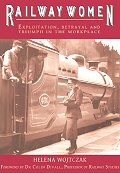
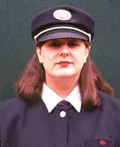
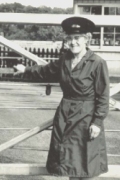
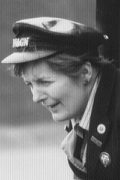
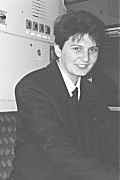
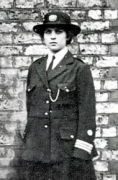

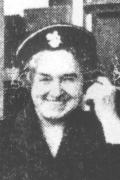
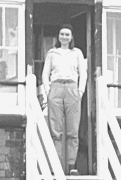

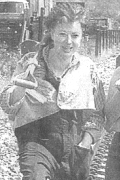
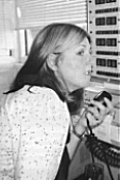
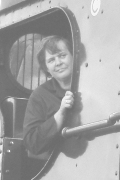

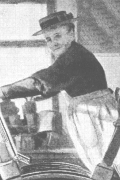
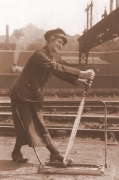
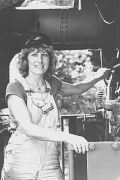
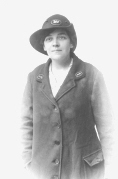
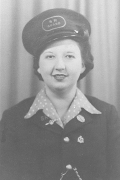
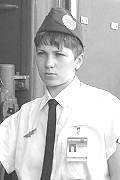
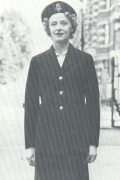
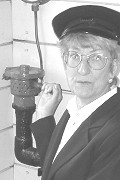






|
REVIEWS of "RAILWAYWOMEN"PAGE 1 page 2
"An impressive piece of work … We are introduced to the individual women who were heroines and pioneers, and it is here that Helena Wojtczak's strength lies. She has unearthed the lives of railwaywomen from a wide range of sources, and uncovered new information missed, ignored or perhaps even deliberately suppressed by earlier historians. This is truly a labour of love, and her sympathy with these women shines through."
British Association for Local History
"Shocking, entertaining and easy to read. A valuable contribution to women's industrial and social history."
The Citizen
"This is true hidden history."
The New Statesman
"An engrossing collage of historic and contemporary documents, photographs, official reports and vivid personal testimonies,
the result is a definitive history of women in the railway industry."
Ian Allan website
"I am very impressed." George Ottley
"The book is a result of meticulous and painstaking research from a vast array of diverse and innovative primary sources. From newspapers to railway companies' journals, staff newsletters to Hansard references, and Union conference minutes to Pathé public information films, it seems that nothing has been overlooked."
Oral History magazine
"A wonderfully complete picture of railwaywomen in war and peace."
Gail Braybon, author of Women Workers in the First World War
"Meticulous archival research. Traces the trials, tribulations and triumphs of women's attempts to earn a fair and decent living in this male-dominated industry."
Dr Gerry Holloway, University of Sussex
"The definitive guide to the place of women in the history of Britain's railways."
The Brighton Argus
"A substantial, well-written book which is both a good read and a definitive work of reference... An authoritative account of the
contribution that women have made to Britain's railways is long overdue. It was worth waiting for." Grahame Boyes (Railway & Canal Historical Society)
"An entirely new contribution to railway history, this important book fills a large gap in the literature, and is enriched by valuable oral testimony."
Dr Terry Gourvish, LSE
"A truly wonderful book. A brilliant record of the emerging role of women in our society."
Rt Hon Tony Benn
"Wojtczak has a rare talent which combines rigorous academic research with an immense gift for storytelling.
Unique photographs, cartoons, newspaper cut-outs and comprehensive statistics elegantly support the text. The volume can be randomly opened on any page where an engrossing read invariably awaits."
Michal Boncza, The Morning Star
"Fascinating reading. Helena's style keeps you interested and wanting to read more. Strongly recommended." Pat Hammond
"I am very impressed, at several levels. The book is demonstrably based
on a very great deal of careful research in a very wide range of
sources, and combines the results of that research in a succinct manner
that simultaneously conveys concepts whilst avoiding obvious
partisanship. To tackle a topic like this without descending into petty
polemic is to be praised. Helena lets the statements distilled from
all those sources speak for themselves. At the same time, her quietly
understated sarcasm peeks through when quoting the un-fair sex's
comments, and juxtaposing their statements then and statements now, thus
letting the reader judge the contradictions. That sort of presentation
demands deft linguistic ability, which she has.
The language is straightforward. As someone who has on a daily basis to
handle some horrendous so-called English, it is a delight to be able to
simply read something for the pleasure of reading it, without having to
stumble over badly constructed sentences that combine ambiguity with
pompous verbosity and malapropisms.
At a more basic level, the technical presentation is commendable. It is a relief to be able to read something without having to stop myself adding in missing commas, etc.
Most books I see seem to have dozens of punctuation errors, layout infelicities, and simple down-to-earth shoddy language, spelling and style. Against that murky environment, the book shines like a beacon of hope for English academic language."
Thor Lawrence
"When Helena Wojtczak mentioned to a fellow railway researcher that she was writing a book about railwaywomen, he said she was wasting her time and asserted that women had played no significant role in their history. Despite many similar put downs, Wojtczak persevered and was, of course, proved right. There was indeed, a fantastic book in the previously untold story of women in the railways even though she had to publish it herself.
The conventional wisdom is that women helped out a bit on the railways in the world wars, but otherwise the railways were a man's world. The truth is very different. There is a rich history even if there never were any women train drivers in the age of steam and in peacetime women were mostly confined to certain well defined jobs - the three cs, as Wojtczak calls them: catering, clerical and crossing keepers.
The latter is the most unexpected finding: the first women crossing keepers were employed in the 1850 and from 1926 outnumbered men in that job. But of course they suffered blatant discrimination in both pay and conditions. In 1950, men were paid around £7 while women got just over half, between £3 11 shillings to £4 10 shillings. Moreover, while men were restricted by law to a 12 hour shift, women keepers could work 16 hours or more, being allowed only four hours 'shopping leave'. It is sadly inevitable that crossing keepers had the lowest status of any job in the railways
Wojtczak's meticulous research uncovers early women rail workers in all sorts of odd places. The first women were cleaners, ladies' room attendants, catering workers and, more surprisingly, as early as the 1850s, crossing keepers. Wojtczak herself was one of the pioneers, becoming the first guard to be employed by British Rail in 1979.
This is true hidden history. What's more it seems to have been almost malevolently forgotten by the inevitably male chroniclers of the railway. Time and again Wojtczak tells a story about a woman's involvement in a railway incident but when the tale is written up in a railway history, the female dimension is completely omitted. For example, when porter Violet Wisdom helped with the chaotic scene after the 1942 bombing of Bramley station in Surrey, the male chronicler of the tale only mentioned the other railway worker to be first on the scene, the fireman of a train who 'single-handedly attended the injured', although both received certificates for the way they handled the situation.
Wojtczak highlights, too, how Railnews , BR's staff newspaper, perpetuated the myth that women had little place in the industry other than to decorate the calendars of suppliers. In the post Equal Rights Act era, it persisted in presenting women who broke through the glass barrier into new areas of railway employment as 'pretty brunette' or 'curvy blonde'
The unions come out particularly badly. They were always more concerned with protecting the position of their male members rather than recognising that women had a right to a decent wage too. This meant that there was active discouragement of women taking on many jobs, policies that were often hidden behind patronising nonsense as 'their busts would get in the way' or 'it would damage their health'. Even as recently as the 1960s, the unions themselves discriminated against women workers, paying female clerks half as much as their male counterparts.
While both world wars offered temporary opportunities for women, in peacetime they quickly lost much of the ground they gained. Wojtczak is particularly good at dispelling myths here, showing that it was not married women earning 'pin money' who took on these roles but those with no other source of support. Although many were war widows, they were ruthlessly culled from jobs they needed desperately so that male 'breadwinners' could take them back. The unions were deeply implicated in helping create a climate in which men's needs were seen to be paramount.
Wojtczak's effort to document all so much of her meticulous research occasionally makes the book into too much of a catalogue and recitation of tales of women in the industry, although that characteristic will make it an invaluable resource for researchers for years to come. Fortunately, she writes well enough to carry the reader along, helped by a great collection of photographs and drawings.
This is more than a history of women's involvement in the railway. It is a carefully documented story of discrimination which at times is so wicked as to make one wince, and reminds us just that the whole idea of women working on equal terms with men is so novel. The Sex Discrimination Act came into force only 30 years ago and attitudes were slower to change than the law. Women were put off applying by a phalanx of middle managers who made sure that they were deterred from even trying, and by job titles that retained their sexist wording long after the passing of the act.
Wojtczak, however, celebrates the fact that 'ultimately, railwaywomen have triumphed' since they have equal pay and equal opportunities. Indeed, three women currently head train operating companies and another was in charge of the Scottish zone of Railtrack. Nevertheless, Neanderthals still stalk the railways. Keith Norman, the general secretary of ASLEF dismissed the book saying 'I doubt anyone will read it, anyway'. Prove him wrong.
Christian Wolmar, New Statesman, October 10 2005
"The subtitle of this impressive book sets out the themes which run through Helena Wojtczak’s story of women working in Britain’s railway industry. Women were exploited by the railway companies for their cheapness and supposed docility and, during the two world wars, for their patriotism. They were betrayed by their fellow workers – their ‘brothers’ in the rail unions who collected their subscriptions but failed to protect their interests – and by the managers who while eventually claiming to treat men and women equally continued to ban women from promotion to positions that involved supervising male staff.
For most of railway history women were employed in cleaning, catering, and clerical work, and as crossing keepers. As the industry grew it also became increasingly complex, and the intricacies of the classification of work into male and female, wages and salaried grades (and the implications thereof) proves something of a challenge to the author to explain to her lay reader. Within that framework, however, we are introduced to the individual women who were heroines and pioneers, and it is here that Helena Wojtczak’s strength lies. She has unearthed the lives of railwaywomen from a wide range of sources, and uncovered new information missed, ignored or perhaps even deliberately suppressed by earlier historians. This is truly a labour of love, and her empathy with these women shines through.
Such is the abundance of the descriptive detail that there is little space for analysis. The cursory excursion into patriarchy as the explanation of ‘the problems with men that were faced by women … in traditionally male railway work’ sits uncomfortably simply because it is so brief. It deserves greater depth of treatment, and there is an opportunity for someone to look again at the sources used for this book.
How far have railwaywomen really triumphed? Yes, ‘there is probably no job on the railway that is not done by at least one woman somewhere in Britain’, and Eurostar could celebrate its first anniversary by running a train to Paris with no men amongst the 18 crew (though 15 of them were catering staff). Great progress has indeed been made, but there are still only small numbers of women in what were formerly ‘male’ jobs. And the rich oral testimony that the author has exploited so effectively reveals continuing hostility and patronising attitudes from male colleagues that both shocks and angers the reader. The very last line quotes a union official in 2005 saying of the book ‘I doubt anyone will read it, anyway’. There is still some way to go."
Women's History Review
There is a tendency in modern society to believe that working women are a modern phenomenon and that women working in engineering and railway industries are among the rarest of the breed.
However, Railwaywomen reveals that there have been women on the railways almost from their earliest days - in fact for almost 300 years!
For the past hundred and fifty years female workers have been far more numerous than might have been thought, but they have gone unnoticed because of their low status and lack of recognition from both the masters and the public they served.
At last this happy band of sisters has been given the recognition they deserve in the form of 'Railwaywomen - exploitation, betrayal and triumph in the workplace' by Helena Wojtczak.
The book is an excellent compendium of facts and figures brought together from variety of sources. It is made interesting by the addition of anecdotes and personal stories of railwaywomen throughout the country.
For the first time ever all of these snippets have been brought together in a single cover. The book will be of interest to social historians and social scientists as well as to those with an interest in the story of Britain's railways. It will be a valuable tool for family historians trying to learn more about the lives of their railway ancestors - the lucky ones may also find personal mention of the predecessors they seek!
It is interesting to consider, however, the historical context in which the early railwaywomen struggled. There are probably no accurate statistics showing the number of women applying for jobs or who would choose to take up railway employment if the opportunity offered. In recent mechanical engineering recruitment exercises I have been disappointed that there has not been a single female applicant - though women of today have every opportunity for full time employment, with our household gadgets and labour saving devices.
On the other hand it is clear that society did not want women to play a major role in the workforce. It is hard to understand how such a dual standard could exist. At a time when a woman was occupying the most senior role in the country and was consider both physically and mentally equal to ruling the Empire - how were the rest of ourconsidered sex so inadequate ?
Given that women cope with the pain of childbirth and the huge responsibility of bringing up children and seeing them through childhood illnesses and accidents, how could men believe that they would go to pieces in an emergency?
It took two world wars and a huge amount of political campaigning to prove the point and Helena's book sums up the situation well.
The book is highly readable with some interesting illustrations. It is a pity that the quality of the photographic reproduction does not match the quality of the content - but don't some people just want everything?
Review by HA, BackTrack,
The publication of Railwaywomen was the culmination of over a decade's work by Helena Wojtczak, looking into the hidden stories and experiences of women working on the railways across the UK. Helena was a guard herself, in the Southern Region, and combined much of her research with working the shifts in the industry. She records her own experience, alongside a number of other contemporary contributions.
Reading Helena's book, which takes us back to the beginning of the construction of the passenger and freight rail network in the 1850s, I was struck by the similarities in women's experiences, across the decades and around the country.
Helena has checked through Census returns, parish records, railway company logbooks, trade union records, and a huge amount of anecdotal source material. The result is a detailed examination of women's lives as railway crossing keepers; as labourers themselves, and the wives of labourers, who built the early railways; as seamstresses making the linen for the sleeper services; laundresses; bookbinders; station mistresses; and clerical staff. At the beginning of the 20th century, women workers were in general paid two thirds of that earned by the men in similar jobs, or less. Sometimes women took over their husband's crossing keeper or signalbox duties when the husband died, although for considerably less pay.
In clerical jobs a marriage bar operated, allowing female employees to be effectively considered temporary until leaving for marriage, although many stayed on for years in continuous employment, never marrying.
As we know, World War I placed demands on the rail industry that necessitated women entering the workforce in greater numbers. Helena records the debates in the trade unions at the time, as male workers sought to control which jobs were 'suitable' and protecting their own longer term employment. One of the key points of the NUR (National Union of Railwaymen) agreement with the government in 1915 was that women substituting for men should receive no less than the minimum male rate. This commitment to equal pay was undoubtedly more motivated by protecting the rate for the men's jobs when they returned to them after the war, and apparently women were excluded from receiving any bonus payments, but it must have been significant for the wages that women were able to earn at that time. This book details the local newspaper reports of hundreds and hundreds of applications from women for `male' railway employment as soon as the agreement was signed.
Helena Wojtczak takes us through the war years, the recession, and then into World War 2. In the spring of 1943, it is recorded that 88,464 women were working on the railways. The author has worked closely with the National Railway Museum in contacting previous railway employees, and the book is illustrated with some fantastic photographs of women across the grades in the industry. However, as Helena Wojtczak points out, no women drove trains during the war in Great Britain - that was a step too far. (Although she does point out that the USSR by 1942 had a number of female steam engine drivers and drivers' assistants.)
Helena's book brings together a wealth of experiences of women in the railway industry. Much of the material is personal testimony, both shocking and entertaining, and easy to read. Whilst in my view the author's analysis does not do justice to the contribution that the labour movement has made on some of the issues affecting women's employment particularly in more recent years, there is absolutely no doubt that it is a valuable contribution to women's industrial and social history.
Although substantial, the book is not comprehensively indexed, which will limit its use for reference. However, it is a book that is possible to open at any point and read a few pages to hear women's voices in a male world - and to be reminded of the barriers and opposition that were placed in women's way. The book also records a whole number of positive experiences, and conveys a sense of just how many families over the last century have been touched by living and working with the railway industry.
I worked as a guard and train driver in Glasgow in the 1980s and early 1990s, and was asked to contribute to the book myself. Reading the book made me realise how much many echos there are of my own experiences to be found in other eras in the industry. Reflecting on how I felt at the opening of the Women and the Railways exhibition at the National Railway Museum in 1992, I wrote `Elected politicians often talk of it being a privilege to have the opportunity to represent people and to pursue a political career; that evening I felt proud to have worked alongside so many railway women and men, protecting each others' conditions and rights, and changing the perceptions of what was and was not possible for women and girls.'
This can be a springboard for further research into the hidden lives of women in the railway industry in Scotland, and I would hope to be able to work with others in taking such a project forward in the future.
Review by Ann Henderson, The Citizen
CLICK HERE TO READ A REVIEW BY NICOLA FOX AND THE AUTHOR'S RESPONSE!
|































































